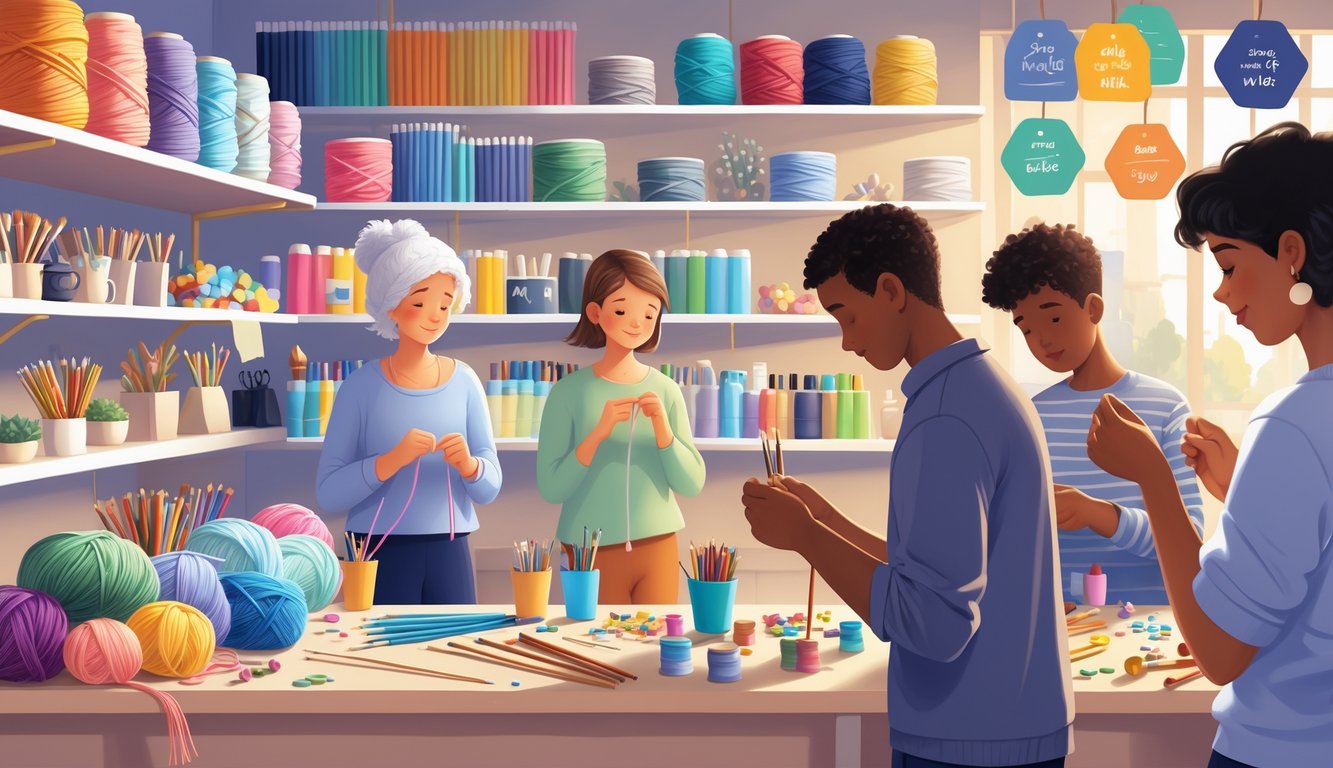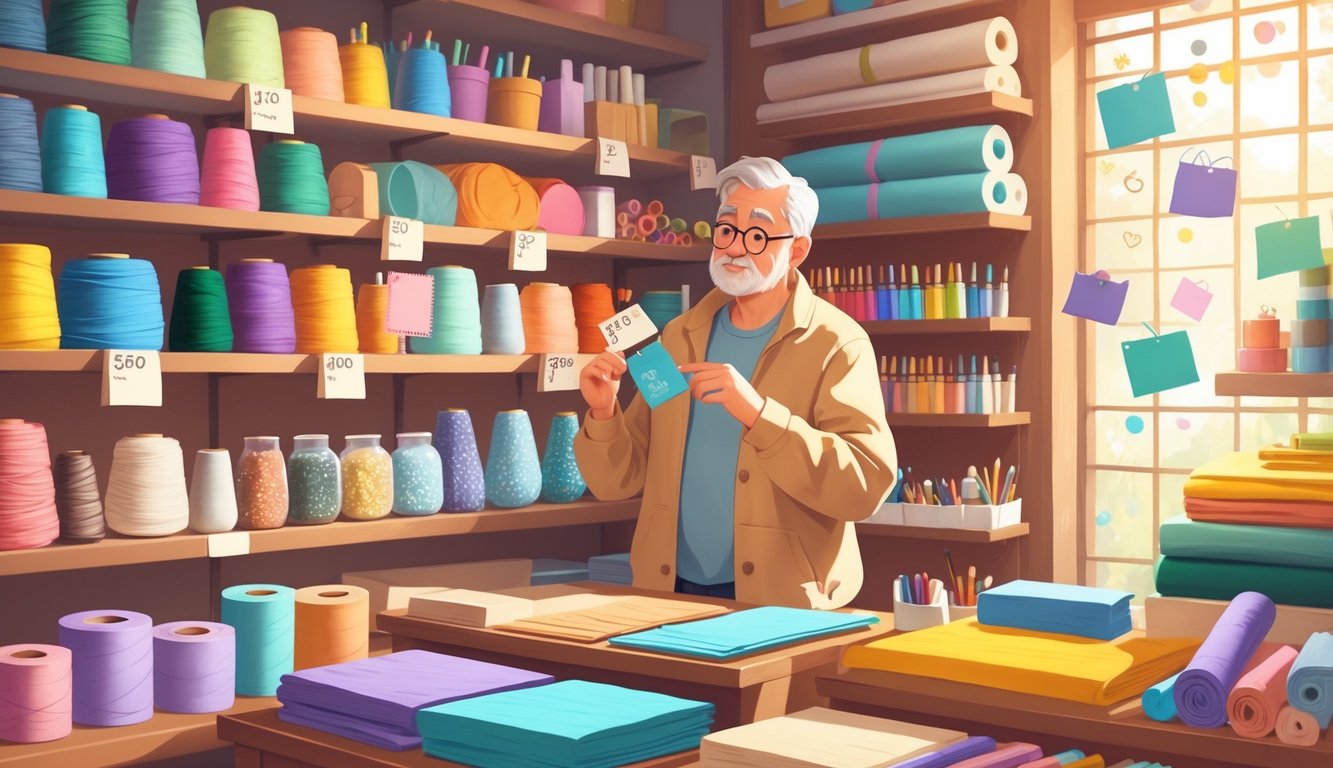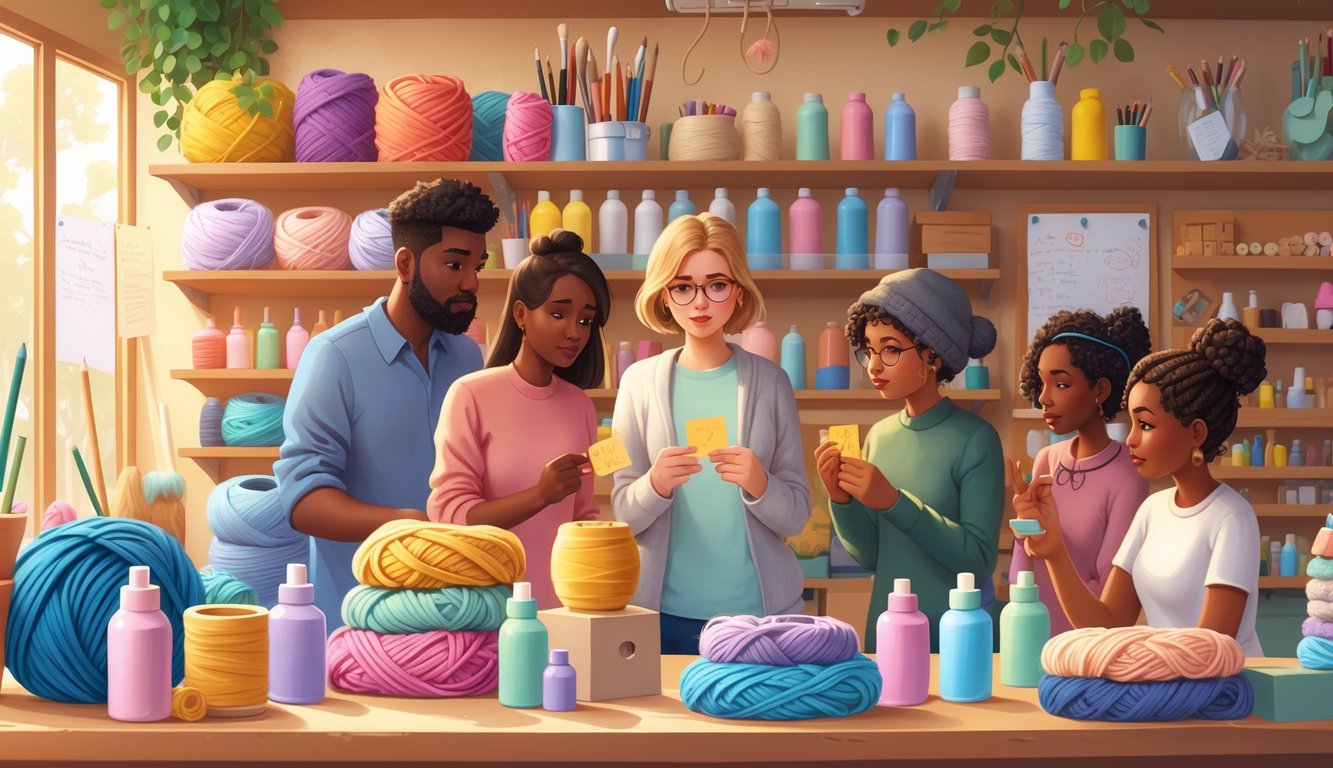
Okay, so I blinked and suddenly cotton fabric is two bucks more per yard. The cashier at my local shop just gave me this look, like, “Yeah, you noticed too, huh?” Apparently, material costs and these random tariffs hit us makers way before anyone else even realizes the shelves are thinning out or that the good fleece is gone and you’re left with that cardboard-stiff junk. JOANN’s been calling those tariffs a “Made in America Tax,” practically begging us to complain about it, but has anyone actually tried to keep tabs on how fast the thread disappears? I swear, every time I walk down the craft aisle, it’s like a new episode of “Guess What’s Missing?” and not in a fun, treasure-hunt sort of way.
You hear about global shipping messes on the news, but meanwhile, every ball of natural wool I buy is a little smaller, and my budget spreadsheet is basically gasping for air. Supposedly, 88% of makers are bracing for higher supply costs—some survey said that, which is weirdly comforting but also, I mean, what am I supposed to do with that? Try telling your friends their custom quilt costs more because of international trade—like, Judy, I don’t sit on the World Trade Organization. And if you think this just means fewer tassels or maybe switching to plastic buttons, you’re not crazy, but honestly, I miss when my only problem was picking between two shades of teal, not worrying if the acrylic will melt under my iron.
Last week I panic-bought five packs of embroidery floss “just in case,” and now, of course, none of them match my current project. Dye lots changed again. If you make stuff, you already feel it: prices inch up, selection gets weird, “out of stock” signs pop up out of nowhere. Just grab your fabric while you can. And don’t trust the fine print—market volatility is not some abstract thing, it’s hiding at the bottom of your supply bin, eating your good deals alive.
Understanding the Landscape of Craft Supply Pricing

Anyway, what’s actually driving me nuts is hot glue sticks and acrylic paint sets basically doubling in price. Like, were we all just pretending not to see it? I tried tracking bulk bead prices, but ended up lost somewhere between “warehouse restock delay” and a cashier who looked at me like I’d asked for a unicorn. It’s never just “supply and demand,” and if you’ve tried to budget a quilt project for next year, you probably have the receipts and the rage.
How Supply Chains Impact Availability
Suddenly there’s a cardboard shortage. Next it’s pigment. Nothing ever lines up with when I actually need foam sheets. Shipping containers get stuck off Long Beach, or the wrong plastic resin is backordered for months—right after I promised three birthday presents. I watched a store manager literally cross out half their yarn labels with a Sharpie.
I read somewhere that textiles and markers from Taiwan spiked in price, and then my favorite fabric dealer, Smith, said their Montréal wholesaler wouldn’t even give quotes anymore because “customs are too unpredictable.” Try explaining to a kid why glitter glue comes in smaller tubes now, or why the matte sealant is just gone. Suppliers get cagey about bulk orders, so you end up staring at empty shelves. Direct-to-consumer shipments lag, but prices sneak up before the boxes even arrive.
Trends in Wholesale Versus Retail Costs
Wholesaler discounts? Sometimes they just… evaporate. I’ll go to order and—poof—it’s gone. Big chains cover themselves by shrinking the unit sizes, but small shops? They’re just scrambling. I counted six times this year my multi-pack embroidery hoops got upgraded to “premium” online, but in-store the price stayed the same—until they shrunk the package. Like, what?
Distributors bundle the good stuff with the junk and jack up the price, and you just eat it. Even the “insider” forums have no clue why sketchbooks go up $2 every few months. Warehouse folks told me cardboard and labor are, like, 20% of the sticker hike. So where’s the other 80% going? I still buy “bulk,” but that just means “more than one tube of paint,” not some warehouse deal.
Retailer Pricing Strategies
Retailers keep playing games and it’s killing my spreadsheet. Everything’s $5.99, never $6, because apparently we’re all dopamine zombies (craft business experts swear it works). I fall for it, then get hit with “buy two, get $5 off” on macramé cord and end up overspending for a couple bucks’ savings.
Art supply shops love their “nickel-and-dime” price jumps: mat boards are $12.95, then $13.49, with a “New Lower Price!” sign. One retailer told me retail prices are “guidelines”—they literally change felt square prices daily if a competitor has a sale. Then there’s the “value packs” and weirdly short holiday discounts. I wish someone would just admit, “Yeah, supply chains are a mess, prices go up,” but instead you’re left guessing which algorithm is squeezing your wallet.
The First Signs Makers Notice When Prices Shift

Wait, my go-to felt bundle costs more than those vitamins I never finish? I didn’t expect craft supply prices to sneak up so quietly, but here’s what tipped me off: sometimes it’s a brutal sticker shock at checkout, sometimes it’s the weird math in multi-pack deals, and then there’s the sneaky move—you can’t even buy a single spool of thread unless you buy three. Crafts are supposed to be relaxing, not a stress test in checkout math.
Sticker Price Increases at Checkout
I stare at the register total, convinced the scanner glitched. Nope. That 40% jump on embroidery floss is real—$1.99 last month, $2.79 today, and nobody even tries to explain. Store managers just shrug and say, “Vendor costs, not us.” I asked two local shops and both blamed supply chain delays and “higher freight charges,” whatever that means.
Table of Comparisons
| Item | Old Price | New Price |
|---|---|---|
| Embroidery Floss | $1.99 | $2.79 |
| Cotton Yarn (ball) | $4.25 | $5.10 |
| Acrylic Paint (8 oz) | $5.49 | $6.00 |
Some blog, probably quoting data like this, says “elasticity is everything,” but let’s be real: no elasticity is saving my wallet. Ever caught yourself checking the receipt three times after impulse-buying beads? Every time.
Changes in Bulk Discounts
Bulk deals? Blink and you’ll miss the loophole. Last spring, six skeins got me 20% off. Now it’s ten skeins for a measly 10%. “Buy One, Get One Half Off” is mostly gone, replaced with “Mix & Match, Exclusions Apply.” Customer service just shrugs—“system can’t override pricing.” Might as well argue with the self-checkout.
Kit sellers and other pros see “wholesale multi-packs” getting smaller, and online shops quietly tweak discounts—one seller messaged me, “discount brackets change every night.” Maybe it’s supply practices, maybe someone’s just bored in accounting. And if you shop around holidays, even the “deep discounts” are just shallow puddles. Should I stock up or go on a single-skein diet? Who even knows anymore.
Minimum Purchase Requirements
So I grab a washi tape, head to checkout, and get hit with a “Minimum Two Required” sign. Shops now hide basic stuff behind three-pack or five-pack minimums—especially online. An Etsy seller DM’d me, “Suppliers make us do it, we just pass it on.” It’s like they’re forcing my hand, and if you’ve watched customer service try to explain new rules, it’s a circus. All these minimums? Just means I end up hoarding more than I’ll ever use.
A big-box store manager hinted that new minimums “streamline restocks” (whatever that means), but it feels like a supply chain mess dressed up as a store policy. If you only need one canvas, too bad—you’re buying five, and now your closet’s full of extras. Maybe wholesalers laugh about it, since their orders start at 50 anyway.



